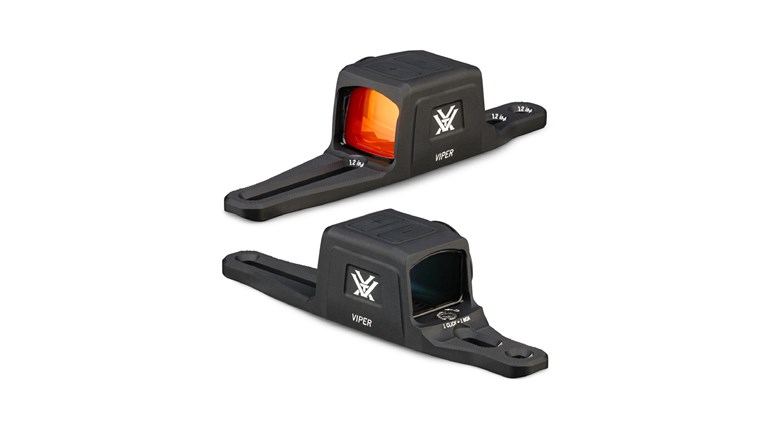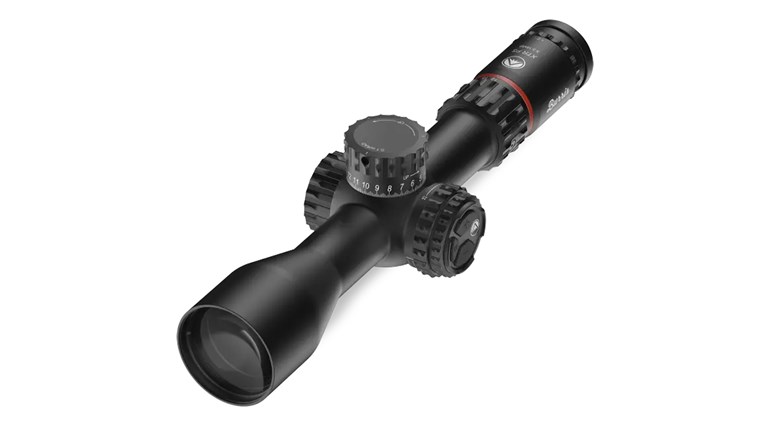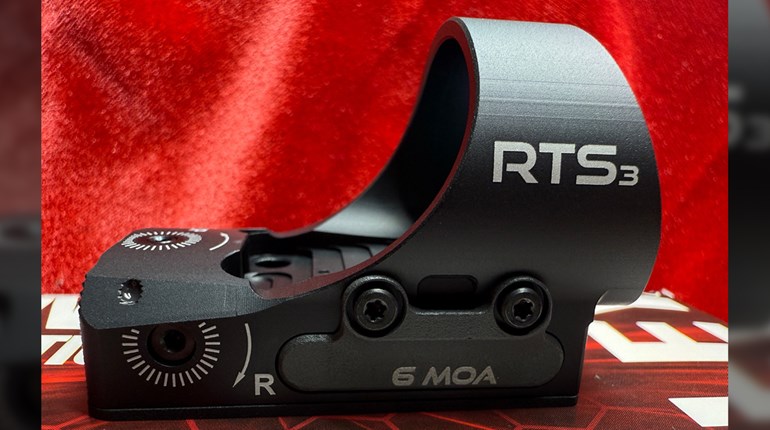
In the last 5 years, slide-mounted red-dot optics (RDO) have come a long way. You can find extensive coverage of their evolution everywhere, including the pages of this magazine. But, some people who have embraced the concept of a slide-mounted RDO still often struggle with using their new optic at speed. This results in people saying “I like the red dot because it makes me more accurate, but I’m slower with it than iron sights at close range.” As it turns out, the slide-mounted RDO is just as fast as your iron sights at close range, if you know how to use it.
To unlock the mysteries of shooting the red dot fast, I grabbed my Beretta APX RDO and signed up for a class from noted red-dot expert Scott Jedlinski of Modern Samurai Project. Jedlinski, or “Jedi” as he’s called online, has an impressive training resume and has shot up to the rank of USPSA Master Class shooter in a very short time. He has a deeply analytical approach to shooting that I tapped into while attending his class. Through the class experience, we identified three areas where shooters often struggle that can cause them to feel like the red dot is “slower” than iron sights.

Over-Confirming the Dot
Experienced pistol shooters are well familiar with the phrase “see what you need to see.” To unpack this Zen statement a little bit, the idea behind it is you only need a good enough sight picture to make the shot at hand, based on your acceptable target area. In practice, this means that if you’re taking a shot at 25 yards on a partially occluded target, you’re going to need a refined sight picture. If you’re taking a shot at 3 yards on a wide-open target, you’ll only need a very gross sight picture, or perhaps no sight picture at all.
One of the reasons that shooters struggle with shooting slide-mounted red dots fast is because there’s a strong desire to make sure that the dot is perfectly centered in the window and perfectly centered on the target. It’s hard to explain why this is exactly, but many shooters who are fast and accurate with iron sights struggle here. A good theory is everyone recognizes how precise the dot can be, and wants to use that precision on every shot—even if it’s not necessary.
But the versatility of the dot, and why it can be so fast at speed, is because “it can be a serving spoon or a scalpel,” according to USPSA Grandmaster Steve Anderson. When users over-confirm the dot for close-range shots, they’re using it like a scalpel, when a serving spoon would work just as well. As mentioned, when a shooter is making a fast shot at 3 yards with iron sights, they don’t need a highly refined sight picture.
Similarly, that shooter doesn’t need a refined sight picture with the dot. When shooting the dot fast, all the shooter needs to do is see enough of the dot in the window over enough of the target to make an acceptable hit. On a 3- to 5-yard, wide-open target, while using the APX, I discovered that I didn’t need to see much of the dot at all. A quick flash of red in the target area was enough to get an accurate hit.

Poor Recoil Control
The second most common issue shooters have with the dot is they’ll say “I lose the dot in recoil” when shooting fast. This is common; I fell victim to it during my early experiments with running a red-dot on a pistol.
The truth is a lot of people have inefficient recoil control, and aren’t controlling the pistol in recoil. Not controlling recoil well enough could be the result of many things. However, a poor grip or an inefficient stance are usually the two biggest culprits.
A poor grip is pretty self-explanatory. Having a loose support hand, not using a thumbs-forward grip, not using enough pinky pressure with your dominant hand—all of these things will result in a sloppy grip. A sloppy grip means the gun will bounce around in recoil, and you will lose the dot in between shots. That will make a gun with an RDO feel a lot slower. Grip problems are a relatively easy fix with two simple things: make your support hand stronger and use more pinky pressure with your dominant hand. It also helps to have a gun that has a large enough surface to grip. Since many modern pistols are designed with replaceable backstraps or modular frames these days, that is a fairly easy problem to solve. The best solution for me with the APX is to use the largest grip module and backstrap available to get a nice, thick grip. There are some other very specific things you can do, but specialized techniques are beyond the scope of this article.
An inefficient stance is also easy to fix. If you’re using the Weaver stance, try Isosceles. If you’re shooting with your head down and your elbows locked, stop. Locking your elbows when shooting makes as much sense as replacing your truck’s suspension with 2x4s. It removes all of your body’s natural ability to absorb energy and forces you to control all the recoil with your hands and small forearm muscles. We’ve already established why that doesn’t work, so unlock your elbows and stand straighter. Your neck and elbows will thank you, and you’ll be able to track the dot better in recoil.

Making Things Harder Than Necessary
The last problem shooters have with the red-dot pistol is that they can’t pick it up on the draw. Jedlinski believes a big cause of this problem is what he calls “useless frenetic motion.” It’s a by-product of the draw being taught as a three-, four-, five- or 18-step process, instead of as a single process that involves multiple motions. By eliminating excess motion, shooters can learn to present the pistol to the same place every time, meaning they’ll be able to pick the dot up faster, which, of course, will make that shooter faster overall.
A great way to see how much excess motion you might have is to film yourself dry-firing with a slow-motion camera. Since most smartphones have useful slow-mo cameras these days, it’s not hard to make this happen. Watching the film play back at one-eighth real-world speed will clearly show you every place you’re wasting energy and motion during your draw.

Eliminate even some of your useless frenetic motion and you’ll find that the dot simply appears during the draw, making an enormous difference in your ability to shoot quickly.
Of course, there is more to using RDOs. These three issues aren’t the only things that can stop someone from being able to shoot their RDO-equipped handgun well while going fast, but they are big, gross issues that are easy to identify and easy to correct. Dry-fire practice with a timer will go a long way toward fixing these concerns using the methods discussed. The point, though, is just putting a red-dot sight on your pistol won’t make you faster. You have to practice to get better at anything, and there’s no gear solution for gaining skill.



































